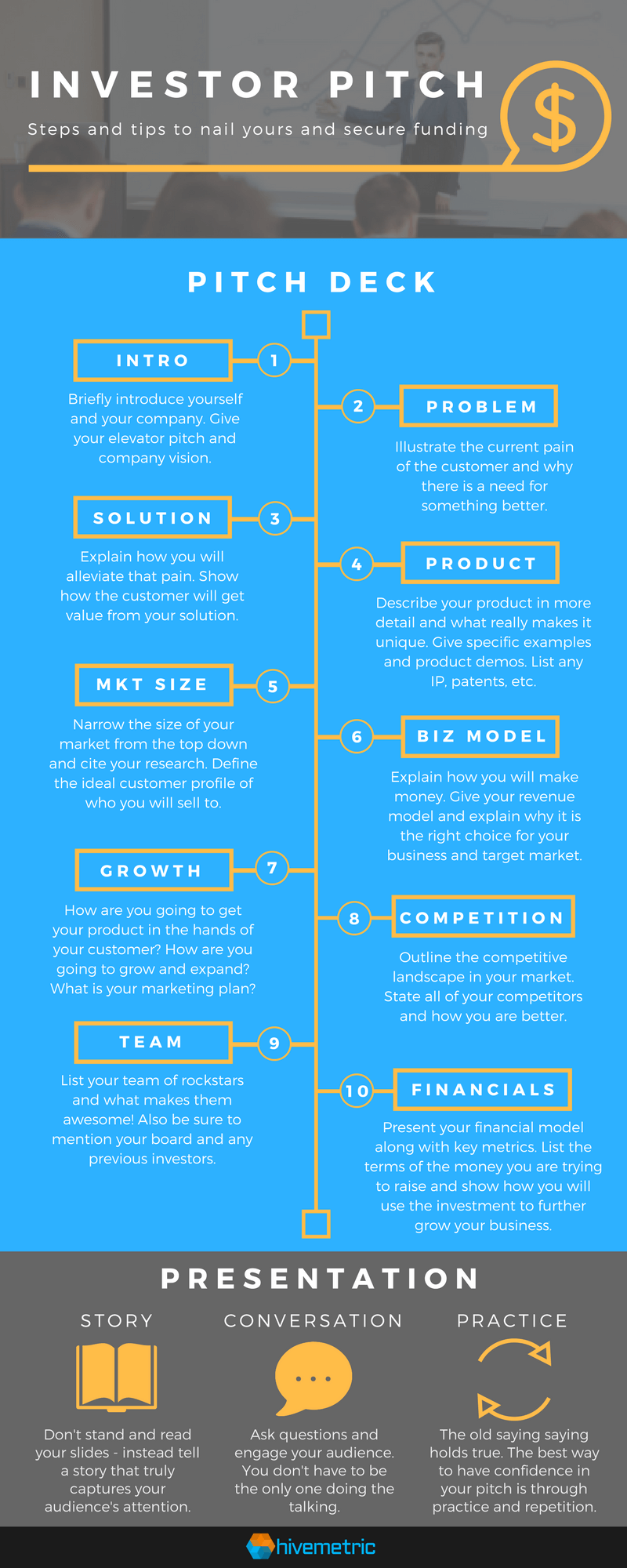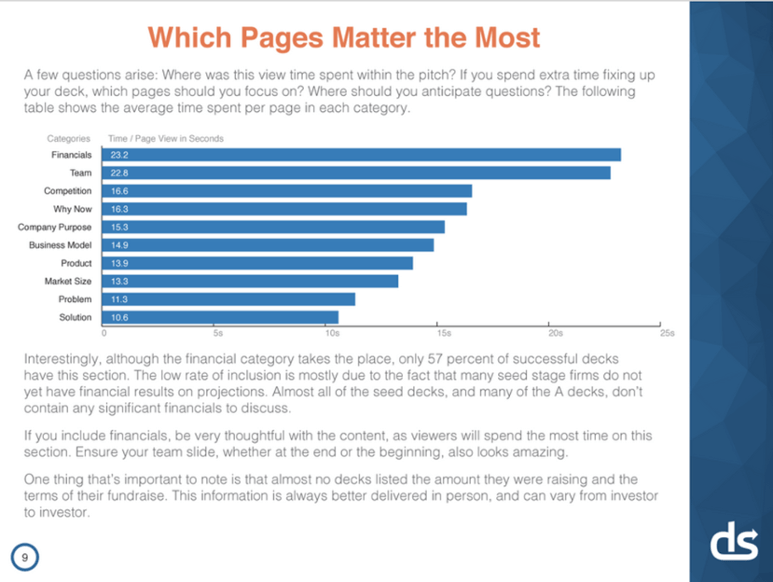Pitching your business to investors can be an intimidating process. You need to create a killer pitch deck, practice repeatedly, and then deliver it all flawlessly. As an early-stage company, we have experienced this process first-hand. There have been ups and downs, but regardless we have learned a lot and have been supplied with tons of incredible feedback.
One thing you quickly learn when pitching to an investor is there is always room for improvement, no matter how refined you think you have it. Even if the feedback you receive seems harsh, your audience is being honest and constructive so you can improve the next time around.
While there are many great pitch decks and resources available, every company will inevitably have slides and a presentation that are different and best suited for their specific business. The following infographic is meant to give you a starting point in creating yours, as well as provide you some important pointers on how to be a better presenter. Many of the points are taken directly from what we have picked up in our own experience.

Let’s ellaborate on a few of the more important points from above.
Something seen all the time with early-stage companies is a pitch where the presenter stands up and stares at the screen reading their slides word for word. Investors quickly lose interest and pull out their phones to respond to emails, check twitter, or check the score of that important basketball game.
Telling a story isn’t only for putting your kids to sleep at night. When you tell a story, it captivates the investor and proves to them how passionate you are about your business. Nobody ever gets bored during a good story.
When is the last time you saw a good presentation without there being some kind of interaction with the audience? Your pitch should be no different. Ask questions to the investor and get them involved in some way or another. When your audience is involved in your pitch, they have no other choice but to give you their full attention.
Lastly, when you present your financial model, it needs to shine. You can’t simply throw a bunch of numbers in an excel spreadsheet and call it a day. If you are going to prove to an investor that you know exactly how your business is going to earn its revenues and manage its expenses, you have to give them a financial model that can tell your company’s full story from beginning to end. Your financial model should never be the reason for why you lost funding.
In fact, studies have found that VCs spend the most time looking at a company’s financials than they do on any other slide of their pitch deck!

Also, check out these other great resources on making your pitch deck!
Sequoia Capital Pitch Deck Template
10 Slides To An Awesome Pitch By Dave Mcclure
The Only 10 Slides You Need in Your Pitch



